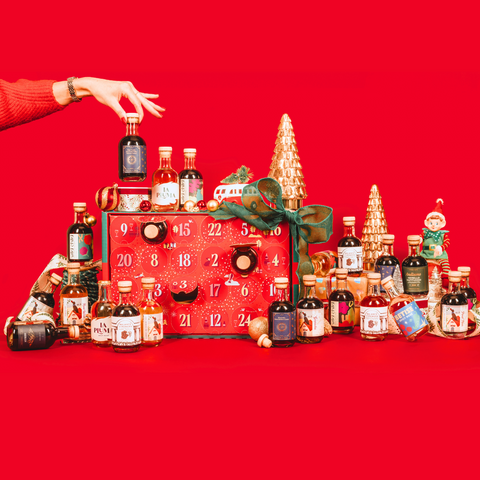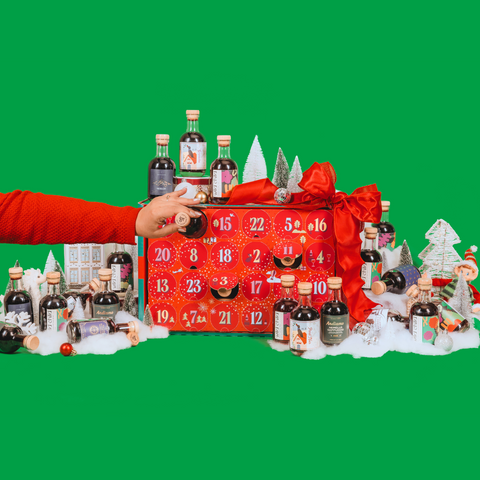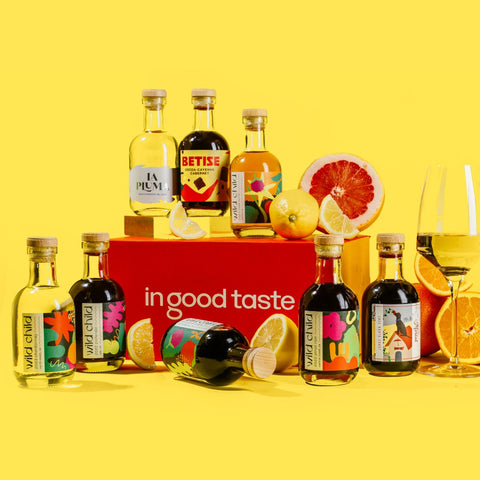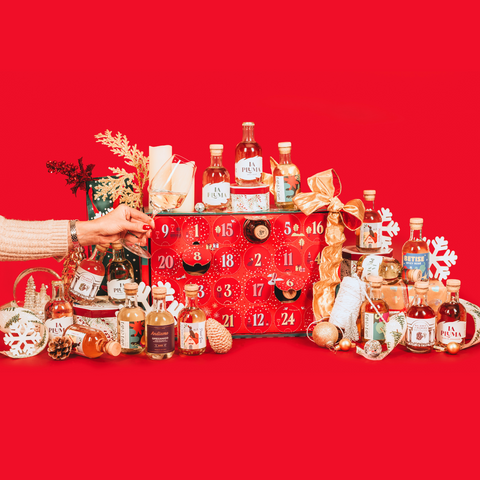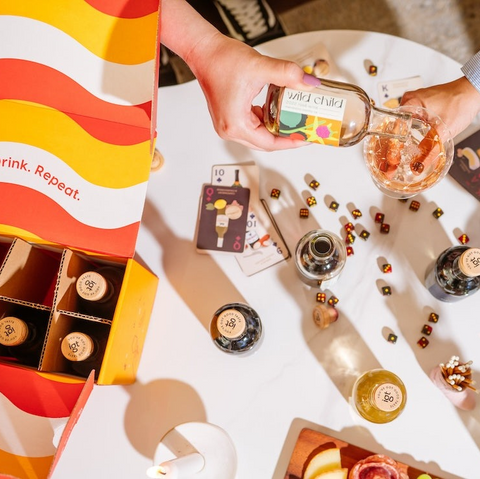How much alcohol is in wine?
As you finish a decadent glass of California Cabernet Sauvignon with your friends on a much-needed Friday night outing, you can’t help but notice that this glass just made you feel a bit differently than that Italian pinot grigio you had the other weekend. Curious, you check the ABV and see that it’s a whopping 14.5%! No wonder, that pinot grigio was more in the neighborhood of 11-12%. Interesting, so why are the ABV levels so different?
In this article, we’ll talk about all things ABV, including how alcohol content affects the wine, what determines the ABV level in wine, which wines have a higher alcohol content than others, and even what types of food to pair with your wine based on their ABV. Read on to become a more savvy consumer of wine!
What is ABV?
ABV, or alcohol by volume, is the amount of alcohol present in a body of liquid and is expressed as a percentage. For example, if a wine has a 10% ABV, that means that for every 100 mL of wine, 10 mL is pure ethyl alcohol, or if the ABV is 15%, there will be 15 mL of ethyl alcohol for every 100 mL. So, the higher the percentage, the higher the alcohol content in a given bottle. This is important to keep in mind when pouring yourself a glass if you’re trying to watch your alcohol intake.

How Alcohol Content Affects Wine
Alcohol plays a crucial component in wine. Notably, it has an essential role in the flavor, body, and taste of your vino. Let’s take a closer look at why shall we?
Flavor
You may have heard a sommelier describe a wine as having a good structure or flavor structure. This is a term that refers to a wine’s balance between alcohol, acid, sugar, and tannins. A good wine will have equal intensity in all of these categories. Otherwise, the wine lacks structure. If the alcohol overpowers the acidity, sugar, and tannins in a wine, it will be too “hot” and have a similar mouthfeel to liquor (think the burn of a vodka shot!).
Body
Alcohol is more viscous than water, so a wine with more alcohol will have a fuller body than one with less. Wines with less alcohol will be lighter and more delicate.
Taste
Alcohol tastes different to different people - it’s something that is literally in your genes! Who knew, right? Half of the population perceives alcohol as having a neutral flavor. One quarter thinks it tastes bitter, while the last quarter thinks it tastes sweet.
What Determines ABV Levels in Wine?
Several factors affect the ABV level in wine, from the type of wine made to where the grape itself is grown. To better understand why these factors play into wine alcohol content, we first need to take a quick look at how alcohol is made in the first place.
How Alcohol is Made
Before a wine is fermented, it starts as a grape juice called “must.” As the “must” ferments, a yeast found on the skin of the grapes called saccharomyces cerevisiae feeds on the natural sugars of the grape juice. The byproducts of this reaction are alcohol, heat, and carbon dioxide. If left alone, the yeast would feed until the sugar is gone and the must is fermented to dryness. Therefore, the amount of sugar in the grape determines the amount of potential alcohol produced.

Any remaining sugar is called residual sugar, making the wine taste sweet. This sugar can be measured using the Brix scale, which measures the soluble solids content in a grape and is expressed in degrees. Each degree of Brix is 1 gram of sugar per 100 grams of grape juice. The more sugar in the grape, the more potential to have higher alcohol content.

ABV in Red Wine vs. White Wine
Generally, red wines have a higher ABV than white wines. Part of this is due to the grapes used, but a more prominent role is a stylistic choice when making the wines. Remember when we talked about the structure of a wine’s flavor? Because red wines are fermented with the grape’s skin, they have more tannins. To balance the flavor and bring harmony to the structure, they need more alcohol.
On the contrary, white wines have no tannins, so maintaining the right level of acidity is more critical. Winemakers usually try to go for high acidity and low alcohol in white wine, giving it that refreshing taste. Having high alcohol and low acidity in white wine is not ideal. Rosés, orange wines, and sparkling wines are structurally more similar to white wine than red, with similar ABV levels.
Region
The region where grapes are grown also affects the ABV level in wine. Wines with a lower ABV are from grapes grown in cooler climates where they struggle to ripen. These grapes have less sugar and, therefore, less potential to have a more considerable amount of alcohol in the first place. Wines with a higher ABV are made with grapes grown in warm, sunny climates where they ripen quickly and have higher sugar content. Examples of low ABV wines (10% or lower) would be sweeter Rieslings, some Grüner Veltliner from Austria, and sparkling wines and Pinot Grigios from Italy. Moderate ABV wines (11-13%) will typically be whites from New Zealand, Northern Italian Wines, and Bordeauxs and Boujalais from France. On the high end of the ABV scale(13-16%+), we have wines from California, Malbecs from Argentina, wines from southern France, and fortified wines.
Wine Serving Size
The amount of alcohol in a given bottle of wine will determine its serving size. The typical serving size to keep in mind is 5 ounces, based on the assumption that the wine has an ABV of 12.5%. A serving of a lower ABV wine can be closer to 6 ounces, while a higher ABV wine serving may be as low as 3 ounces. This is good information to keep in mind because a standard pour of a low ABV white wine will feel much different than a standard pour of a high-ABV Malbec!

Food Pairings by ABV
Because what would a wine blog be if we didn’t give some food pairing recommendations?
If you’re enjoying one of those low alcohol Rieslings, pair it with some seafood, a charcuterie board, soft cheeses like brie or goat cheese, or mascarpone, as well as spicy foods! Riesling is one of the most, if not the most, food-friendly wines in the world!

For wine in that moderate ABV range, you’ve got a lot of varied options. Salmon and shellfish are excellent choices, as are pasta dishes, poultry, and pork.

When drinking a glass of bold California Cabernet Sauvignon with a high ABV, reach for food that has an equally bold flavor like meaty barbeque ribs, steak, aged cheddar, a decadent chocolate cake, or a rich creme brulee.

Nonalcoholic/Dealcoholized Wine
For those nights that you’re cutting back on your alcohol intake, or maybe you’re the designated driver for your crew, but you still want to partake in the festivities of wine, there are options for you! Beyond the world of traditional wine, there are nonalcoholic or dealcoholized wines.
Nonalcoholic wine is not just unfermented grape juice. It is a wine made with the normal fermentation process, but it then goes through an operation to remove all or virtually all of the alcohol. The alcohol is extracted through vacuum distillation or reverse osmosis, and the complex flavors of the wine are then blended back in. These wines have all the flavorful goodness you would expect without the alcohol. You designated drivers out there to deserve to have a tasty libation, too!
The ABV level of wine is an interesting topic with several factors. If alcohol is something you’d like to be mindful of when ordering your next glass of wine, keep in mind if it’s a red or a white and where the grape was grown. When it’s not a worry, enjoy that glass of California cab! If you need something on the lower end, embrace your lighter side with a sparkling glass of Prosecco. That way, you and your wine-loving friends can enjoy your chosen vino for the evening responsibly!


